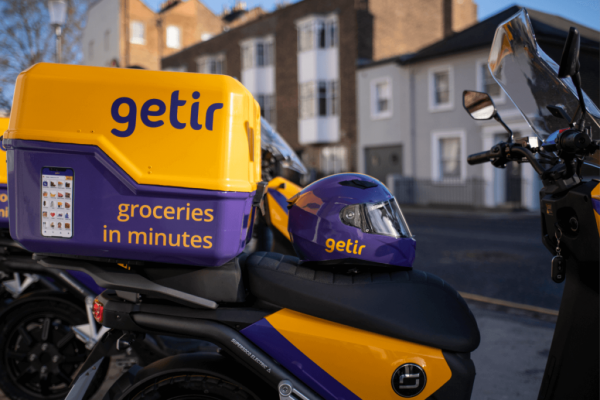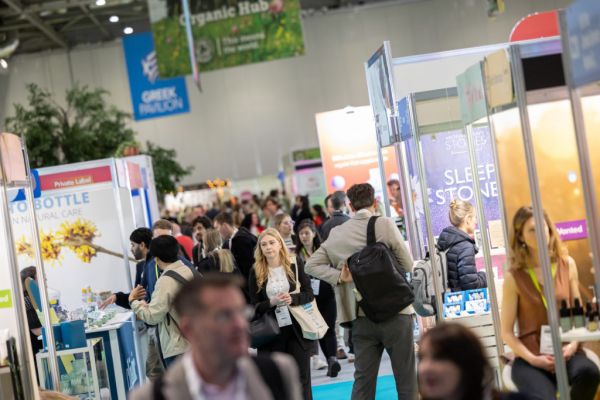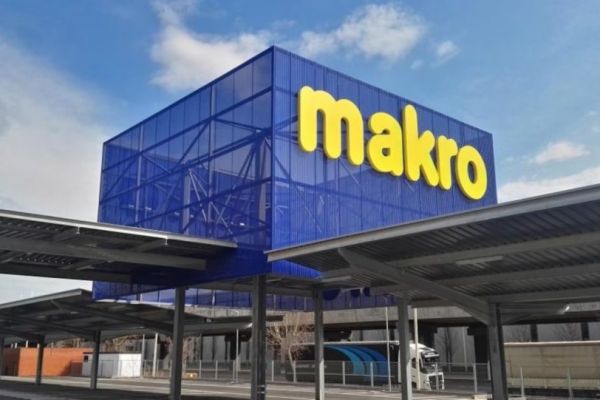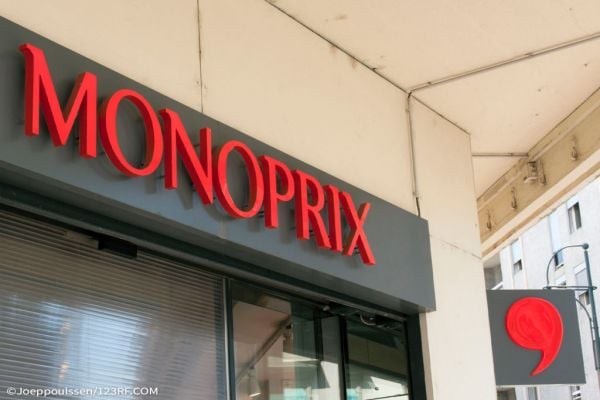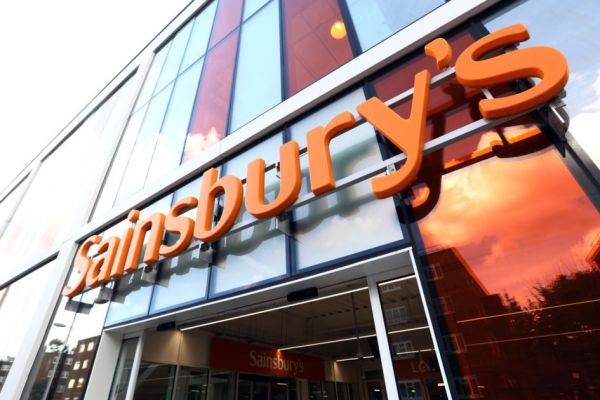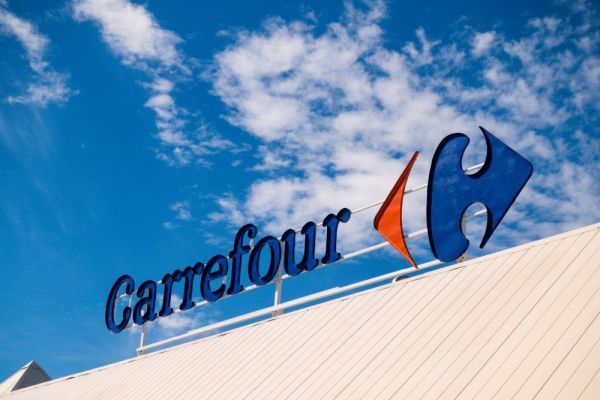From yoga classes and manicures to music lessons in the community area, Tesco hypermarkets of the future are to maximise their space and become all-round leisure destinations. Ben Webb visits the Tesco Extra in Watford.
The giraffe looms before me in the greying late afternoon sky. It is typically tall, with a rather doubtful look in its eye and a Disney-ish smile. It is something of a surprise to find a giraffe on the edge of Watford, but this giraffe is not real. It has not escaped from the safari park just down the road. It is a huge cardboard cut-out, and a sign that something very strange is happening at Tesco.
It is no secret that Tesco has had it tough in recent times. Sir Terry Leahy’s Tesco had grown, in retrospect, tired and lacklustre by the time the new CEO, Philip Clarke, took the helm. Expansion and cost-cutting had undermined the appeal of the stores, and many shoppers had fallen out of love with them. Market share was hit. Investors frowned. Clarke knew that he had to act, and did so with a refreshing honesty. He invested heavily in staff to refresh customer service and the in-store atmosphere. He also wanted to spruce up the stores themselves, especially the larger out-of-town Extras.
Tesco, he conceded, needed a revamp. And that is why we are staring at a giraffe outside the 7,432-square-metre store, the first of Clarke’s new generation of hypermarkets, which gives us a real insight into Tesco’s new philosophy on space usage. It is no longer just a store. It is described as a ‘shopping and leisure destination’. In other words, you can come here to shop, by all means, but you can also stop by for some food in the family- friendly Giraffe restaurant or have a cup of something hot at the Harris + Hoole coffee shop. There are nail bars and opticians, and even a community area for all sorts of very un-Tesco-ish activites. Imagine Sir Terry doing yoga! The first thing I notice is that the huge car parks are full, so full that there are armies of batmen guiding drivers to areas where there are still spaces.
There is no doubt a lot of shoppers are keen to try out the store. The big question is this: will they like what they see? The Watford experiment is vitally important for Tesco – and, many would argue, for the hypermarket concept in general – and a lot of resources have been thrown at it. Then there’s the giraffe and the music – a cool blues track that blares across the sprawling car park from the 170-cover restaurant, which is located at the corner of the vast shed. It can be accessed from outside or from within the store. The diners certainly seem to be enjoying themselves, tucking into the sort of burger you’d find at a high-end American eatery. I scan the menu, a typically modern list of fusion food, and wonder what a Croque Giraffe could contain – chorizo, Serrano ham, sweet red peppers and a tomato tapenade it turns out, all for £6.95.
Tesco’s Shopping Menu It’s a little surreal to be sizing up a menu when appraising a Tesco hypermarket, but as part of its efforts to restore its fortunes, Tesco paid £50m for Giraffe, the family-friendly chain with 48 outlets that brought brunch and mojitos to the high street. Giraffe is the first clear indication that this huge multinational supermarket operation is undergoing profound change. Tesco Extras are no longer just about shopping. Fact. Just pop in for lunch. And then, for example, have your nails done!
For a retailer that accounts for more than one in every £8 spent in UK shops, with UK sales of £47.3bn, the price tag for Giraffe was chicken feed. Now consider the grocer’s recent investment in the coffee shop Harris + Hoole (49 per cent), the Dobbies Garden Centre business and a stake in luxury bakery Euphorium and the Bakery Project. A bold strategic shift is taking place.
Tesco has about ten stores of more than 9,300 square metres and about 42 between 7,400 and 9,300 square metres, and it wants to ensure that all this space is used in a more efficient and attractive way. It’s a well-documented issue. Amazon, eBay – and the supermarkets’ own cannibalistic websites – are nibbling away at the out-of-town model. Market-analysis firm IGD put it starkly, predicting that supermarket stores over 25,000 square feet will see just 6.4-per-cent sales growth in the five years to 2017. Out-of-town superstores are some 40,000 square feet. In contrast, online grocery sales are expected to almost double in that period.
Tesco has already been tweaking the look of stores, putting more prices on chalkboards, adding wood fittings and specialist butcher and bakery counters, but the addition of satellite dining is part of a plan to make out-of-town shopping much more attractive. “We’ve spoken a lot about our vision to create compelling retail destinations in our larger stores, places where customers come to spend time and meet their friends and family,” explains Chris Bush, UK managing director. “Watford is the first store where many of our innovations and ideas have come together, and it’s great to see it all under one roof. “Watford represents a fundamental change in the way that people are doing their shopping. More and more of our customers are shopping for leisure. They want to browse for clothes, eat a meal or grab a cup of coffee, as well as do their weekly shop. It offers us a glimpse into what stores of the future might look like, and we’re really excited to be sharing that with our customers.”
Service With A Smile Apart from the Giraffe restaurant on the corner – and the line of outdoor tables where people are eating away and chatting – the exterior of the shed is basically the same. I enter through the Giraffe entrance, and a waiter carrying lattes swerves past me. “Sorry, sir,” he says graciously and vanishes to deliver his posh coffee. I’m impressed. It feels different already. In my local Tesco, the staff assume they have right of way and are happy to bulldoze you out of the way with their huge trolleys.
The Sound Of Music
Then I notice that the bluesy music of Giraffe is replaced by something more jazzy, calmer. I am in the Euphorium Bakery. I have spent decades studiously avoiding the bread that usually sits forlornly on the Tesco shelf, but I am hit by the vision of amazing bread that has been presented on a table with a little panache. I notice something called a Campaillou, which costs £2.90, and imagine Sir Terry shaking his head at the very thought of such extravagance, when a sliced white can be stacked high at £0.49. Staff carrying trays invite shoppers to try the bread. I try a dark brown Scandinavian loaf that is rich and delicious. There is bread of all shapes and sizes. It feels like ... a real bakery, and not the usual half-hearted heating zone run by staff in white hats masquerading as bakers. The entire store has been refurbished – it feels light and spacious – and the floor has a pleasant marbled finish. Lisa, a local housewife pushing a semi-full trolley with two young children in tow, seems impressed. “The old Tesco was depressing and felt a bit cramped,” she says. “I much prefer the new design. We haven’t tried Giraffe yet – it’s quite expensive – but I’m sure we will. The fresh-food area looks much more inspiring.” Tesco has prioritised the food proposition. Shoppers can easily shop for food without having to trek along the non-food aisles that are now to the right and rear of the store. The fresh fruit and vegetable section is large and well presented. Some beetroots and lettuces are being cooled on a dedicated refrigeration unit that pours a cold vapour over the produce. It’s admittedly small, relative to the size of the store, but it is dramatic all the same. Even if it delivers little in extra overall quality, it shows that Tesco is thinking and pre- pared to try new ideas. Clarke is clearly keen to innovate. The centre of the shop is an island of fresh-food counters, from delis and a hot pizza stall to the butcher and fishmonger. The fishmonger is holding up a side of salmon, which is on special at a third off the price, describing how it can be cooked to a curious shopper. The butcher is set- ting out some meat with an eye for detail lacking in many supermarkets. He gives the impression that he respects the meat in his hands and knows the exact cut. The Harris + Hoole coffee shop is designed as a place to find respite. The coffee is artisanal and the food – the cakes and pastries – are made freshly, locally and daily. Nick Tooley, the founder and chief executive, says that the equipment and the beans are the best on the high street, and adds that the makers are “masters of their craft”. “What makes the shop is the fact it feels like an oasis,” he explains, “a coffee haven away from the business of people’s lives.” The trouble is that Harris + Hoole is very busy – too busy. The staff is battling to keep up. My wife orders a latte and is given a buzzer that will, theoretically, buzz when her coffee is ready. After ten minutes, it remains silent. “Can I help?” a member of staff asks. “I ordered a coffee and it hasn’t arrived.” “Oh. Take it to the counter.” At the counter, my wife, Amanda, presents the unit to a flustered member of staff, who looks at the unit and says, “Hi, Sue.” “I’m Amanda.” “Really?” “I’m pretty sure.” “What did you want?” “A latte.” Eventually, my wife sits down and gets a rather ordinary coffee. With a rueful smile, an old lady beside her stares at the buzzer on her table and says, “In the old days, you asked for a coffee and they just gave you one.” My wife’s verdict: “Havoc. Lots of staff members milling about with no idea what to do.” But here’s the positive view. It was busy. Once the management issues have been resolved, it is easy to see that it could become an integral part of many consumers’ shopping trips.
Non-Food
The area for general merchandise, which is focused on homeware, cooking and dining, has been reduced in size as more non-food is being bought online. This has freed up space for the foodservice areas and for a series of concessions. So there are fewer high-price items like large televisions and other big-boxed electricals, which take up space and do not sell particularly well. If it’s in the store, an effort has been made to sell out. The pile-’em-high-and- sell-’em-cheap philosophy has gone. Everything must look its best, rather than just plonked on a shelf. The F&F clothing area has a much more glitzy boutique feel – it could almost be a Topshop or Next – and along the back wall of the store there are a series of smaller shopping units – an optician’s, a photo store, a pharmacy, a Nutri Centre health shop and others. The community space can be used by customers free of charge for events such as yoga, a baby gym and cookery classes. In the newly revamped health and beauty section, a lady is relaxing, having her nails treated. A second woman is lying back, having a makeover. Following the over- haul of the range earlier this year, the Tesco Loves Baby area is also far more prominent. All around, the staff are chatting in huddles. I often used to visit the Tesco in Hendon, north London, where finding a member of staff was an ordeal. No prob- lem in Watford. Managers in ties are strolling about. There is a woman in yel- low holding a huge yellow lollipop asking, ‘Can I help?’ There’s no question that Tesco is pulling out all the stops. Last year Tesco gave more power to local mangers, which is another vital part of Clarke’s strategy. There is an unusual energy in the store. How long it can last?
The Future
There is no doubt that the Watford refur- bishment shows the out-of-town hypermarket has legs. It is not perfect. There will be teething troubles and a lot of refinement to be done to ensure the store captures the imaginations of the local customers. It will not be a one-size-fits-all philosophy. Each of the ‘leisure’ destinations needs to maximise its use of space. There are other questions: how will the Giraffe and Harris + Hoole brands adapt to being Tesco-ised? Will they suffer? Nevertheless, it must be heartening for the staff to be part of such an experiment. The momentum is building, and it is clear that Clarke has big ideas.
In the coming months, another of Tesco’s biggest stores, in Stockton-on-Tees, will include a gym where people will be able to take Pilates and Zumba classes. Space is everything. Tom Ironside, the British Retail Consortium’s director of business and reg- ulation, said, “Many of our members are exploring how they can become closer to the communities they serve by using their space creatively.” After walking around the store for an hour, I’m peckish. I skip Giraffe, the goodies on sale in Harris + Hoole, and ignore the temptation in the bakery area. I buy a Tesco Finest sandwich. It’s dry and tasteless. I drop it into a bin on the con- course, the sound of blues in my ear, and realise that Philip Clarke has a huge job. But the Tesco Extra in Watford shows promise ...!


